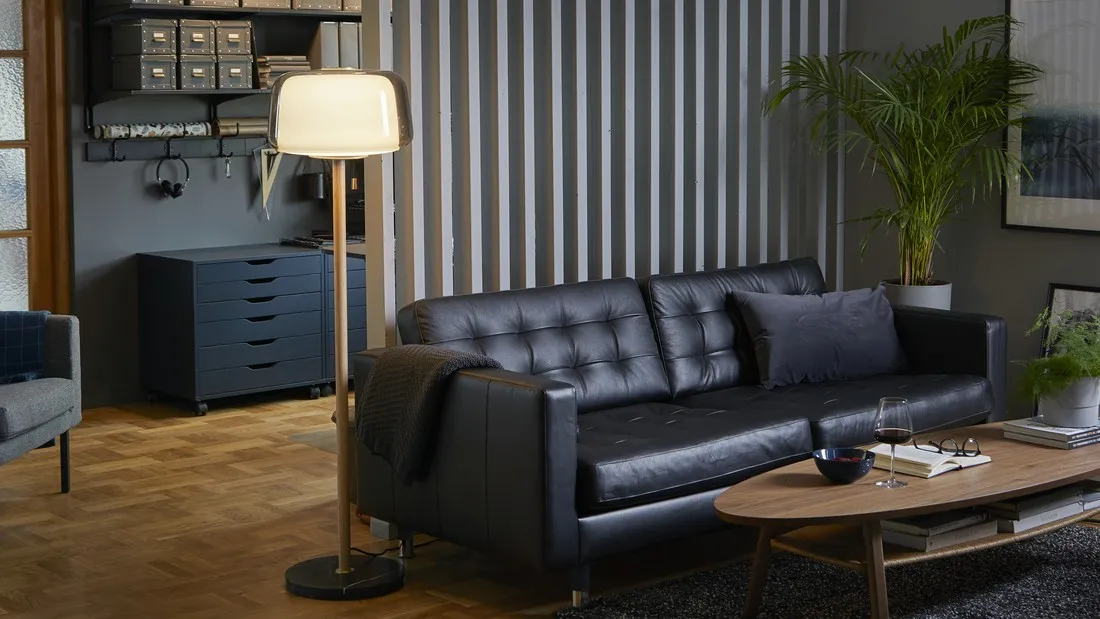Synthetic leather sofas add an elegant touch to your living room, but stains and dirt can tarnish their appearance. To keep your sofa clean and impressive, it's important to know the proper cleaning methods.
In this article, we will discuss effective steps and methods for cleaning synthetic leather sofas, from using cloths to special brushes.
Check out practical tips for dealing with stubborn stains and keeping your sofa looking new. With the right techniques, you can restore the beauty of your sofa without worrying about damaging the synthetic leather material.
Synthetic Leather Sofa vs. Real Leather: Which is Easier to Maintain?
In terms of maintenance, synthetic leather sofas are generally easier to care for compared to real leather. Synthetic leather surfaces are resistant to stains and dirt and can be cleaned with mild soap and a soft cloth.
However, if not properly maintained, synthetic leather can darken or crack over time. In contrast, real leather sofas require more intensive care.
Real leather must be treated with special products to maintain its moisture and prevent damage, such as regularly applying leather conditioner.
Additionally, in terms of cost, synthetic leather sofas are generally more affordable and easier to maintain compared to real leather. Synthetic leather surfaces resist stains and dirt and are easily cleaned with mild soap and a soft cloth.
However, if not properly maintained, synthetic leather can darken or crack over time. On the other hand, real leather sofas require more intensive care.
Real leather must be treated with special products to maintain its moisture and prevent damage, such as regularly applying leather conditioner.
Lastly, in terms of appearance, real leather is often considered superior due to its more natural and elegant look. However, synthetic leather can also offer an attractive and modern appearance with proper care to maintain its look.
Read Also:
5 Recommendations for Comfortable & Elegant Living Room Sofas
Effective Ways to Clean Synthetic Leather Sofas
Here are steps to clean synthetic leather sofas effectively. Follow these methods to maintain the quality of your sofa.
Tools and Materials Needed
To keep your synthetic leather sofa clean and well-maintained, you will need the following tools and materials:
- Soft cloth: For thoroughly cleaning the sofa's surface.
- Soft brush: For cleaning hard-to-reach areas.
- Synthetic leather cleaner: Make sure this cleaner is safe and specifically designed for synthetic leather.
- Warm water: To mix with the cleaner.
- Stain remover: Specifically for tackling stubborn stains like ink or coffee.
Step-by-Step Guide to Cleaning Synthetic Leather Sofas
- Ensure the sofa is dry. Remove dust and dirt from the surface using a soft cloth or brush. This prevents dirt from scratching into the synthetic leather during cleaning.
- Mix synthetic leather cleaner with warm water. Use a ratio of about one tablespoon of cleaner to one liter of water. Stir until the solution is foamy.
- Dip a soft cloth into the soapy solution, wring it out so it is not too wet, and wipe it evenly over the sofa's surface. Avoid using excess water to prevent darkening or damaging the synthetic leather.
- Apply a small amount of stain remover safe for synthetic leather to a cotton ball or soft cloth. Gently rub the ink stain until it starts to fade, then clean with a damp cloth and dry with a clean towel.
- After cleaning, ensure the sofa is completely dry. Use a dry cloth to absorb any remaining moisture and let the sofa air-dry in a place not exposed to direct sunlight.
Removing Stubborn Stains with Natural Ingredients






